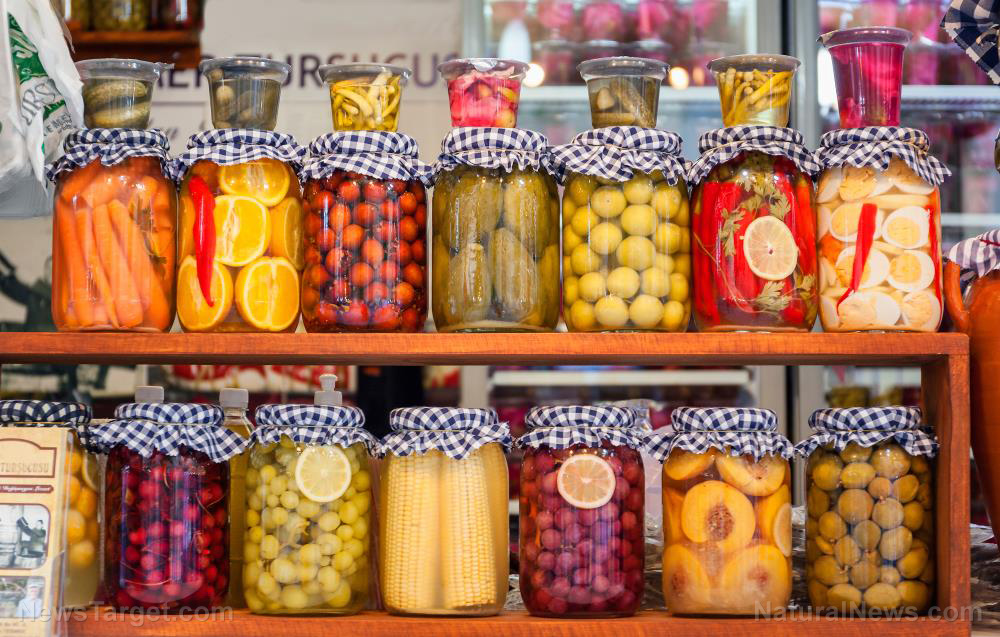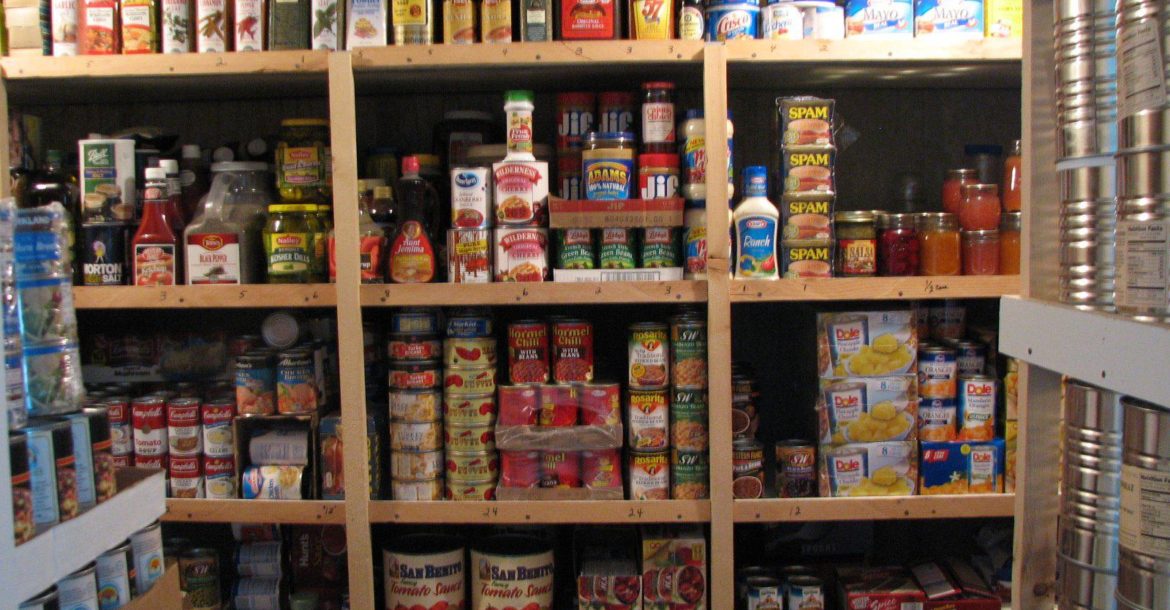How to grow your own survival garden
11/21/2024 / By HRS Editors

Gardening is beneficial for preppers because it gives access to fresh produce grown without harmful pesticides and other chemicals. It’s also a great hobby if you want to start preserving excess fruits and vegetables for selling or to add to your stockpile. (h/t to Almanac.com)
Choose the right location for your garden
Here are some tips for choosing a good gardening site:
Find a sunny spot
This is crucial because many vegetables need at least six to eight hours of direct sunlight daily. Some, particularly leafy vegetables, will tolerate some shade.
Chose a stable location that’s not windy
Avoid locations that receive strong winds that could knock over young plants or prevent bees and other pollinators from doing their job.
You also want to avoid a location that receives too much foot traffic or floods easily.
Plant in nutrient-rich soil
The soil feeds your plants, and if you grow crops on thin, nutrient-poor soil, your plants will be poor and unhealthy.
Add organic matter to grow strong and healthy plants.
Plant in soil that drains well and doesn’t stay wet
If you only have poorly draining soil where water pools, plant your crops in a raised bed or raised row for improved drainage.
Wet soil means wet roots, which can result in rotted roots.
If you are stuck with rocky soil, till and remove the rocks because they will interfere with root growth and produce weaker plants. (Related: Home gardening tips: Guide to harvesting seeds from fruits and vegetables for propagation.)
Start with a small and manageable plot
If starting a garden feels overwhelming, make things easier for yourself and start with a small garden that will be manageable, especially if you are a beginner.
Plan your garden before you plant anything, and start small. Focus on plants that are easy to grow and that you are sure your family will eat.
When planting in the ground, having a 10×10-foot garden (100 square feet) should be manageable. Choose at least three to five of your favorite vegetables and buy three to five plants of each one.
For a raised bed, a 4×4-foot or 4×8-foot one is a good size for a beginner.
After you decide on how big your garden is going to be, leave spacious paths that give you access to your plants so you can weed and harvest. You should be able to easily reach the row or bed center without stepping on the soil.
Grow the right vegetables
Beginners should start by growing vegetables that are productive. If you’re not sure, call your state’s Cooperative Extension Service to confirm what plants grow best in your area.
Here are some of the easiest vegetables to grow for beginners. Most are best started by seeds planted directly into the soil unless specified:
- Beets
- Cabbage
- Carrots
- Chard, kale, or spinach
- Garlic
- Green beans
- Lettuce
- Onions
- Peas
- Peppers (by transplant, i.e. small nursery plant)
- Potatoes
- Radishes
- Squash
- Tomatoes (by transplant, i.e. small nursery plant)
- Zucchini
Plant flowers, such as marigolds, to naturally discourage pests and attract pollinators to your garden.
When choosing vegetables, choose crops that your family likes to eat. You should also be realistic about how many vegetables your family will eat when SHTF.
Don’t overplant because this can make you feel overwhelmed if you need to take care of too many plants.
Learn how to care for plants throughout the growing season.
Lastly, use high-quality seeds so you don’t waste time and money on your garden.
Where to buy supplies for your home garden
The Health Ranger Store is here to help you prepare for emergencies as you start a home garden.
That’s why we’re proud to introduce an assortment of high-quality gardening tools and supplies such as Backyard Seed Kits and the Garden Tower 2.
Health Ranger Store premium Backyard Seed Kits are filled with power-packed, organically grown seeds. Labeled and sealed separately to aid with use and longevity, each of our seed-growing vegetable garden starter kits is packaged using self-sealed containers designed for long-term storage.
With over 20,000 seeds, our vegetable garden-seed starter kits provide a wide variety of fruits, vegetables, and herbs. Choose the heirloom seed starter kit guaranteed to last for years.
The Backyard Seed Kit contains:
- Arugula – 500
- Beets – 250
- Bell Pepper – 25
- Broccoli – 500
- Brussel Sprouts – 100
- Butternut Squash – 50
- Cabbage – 500
- Carrots – 1000
- Cucumber – 100
- Dry Bean – 200
- Green Bean – 100
- Kale – 200
- 2 Lettuces – 1000
- Parsnips – 500
- Radish – 500
- Snap Pea – 100
- Spinach – 350
- Sweet Corn – 100
- 2 Tomatoes – 200
- Watermelon – 50
- Yellow Onion – 100
- Zucchini – 25
The kit also contains Basil, Chives, Cilantro, Dill, Oregano and Parsley.
You can also try the Garden Tower 2™, 50-Plant Composting Vertical Garden Planter, the composting 50-plant accessible vertical Garden Tower® for organic balcony and vertical gardening by Garden Tower® Project.
This high-quality planter is 100% UV-stable food-grade high-purity HDPE plastic and is backed by a five-year manufacturer warranty.
Recently named the “World’s Most Advanced Vertical Garden Planter,” the Garden Tower® 2 features food-grade USA-made HDPE (non-toxic, BPA & PVC free plastic) components, FDA-approved dye and UV-protection antioxidant package for health, durability and recyclability.
The rotating Garden Tower® 2 is a composter that grows 50 plants in four square feet nearly anywhere. It also turns waste kitchen scraps into organic fertilizer to grow organic produce.
The Garden Tower® vertical garden planter and composting system replicates a natural ecosystem allowing plants to access nutrients recycled through organic composting processes.
It can easily grow nearly any vegetable, herb, or flower organically. This organic and resilient six cubic-foot vertical soil-based is an alternative to expensive and difficult hydroponic systems.
The planter is 43? tall and 24.5? wide. 36 lbs. (-220 lbs. with moist soil).
Visit Health Ranger Store and Brighteon Store to browse more prepping supplies. You can also check out HomeGardeningnews.com for more articles with gardening tips.
Click on this link to read about 61 essential food items for your survival stockpile.
Watch this clip for more useful gardening tips.
This video is from the Survival Prepper For Beginners channel on Brighteon.com.
More related stories:
Stock up on these long-term storable survival foods that you can grab at a grocery store.
Home gardening tips: How to make the best compost for healthy crops.
Food preservation techniques: Keep your pantry stocked for any crisis.
Quick pickles: The perfect snack to add to your survival stockpile.
Sources include:
Submit a correction >>
Tagged Under:
backyard gardening, emergency preparedness, emergency stockpile, food freedom, food independence, food supply, gardening, gardening tips, green living, home gardening, homesteading, how-to, off grid, preparedness, prepper, prepping, prepping tips, survival
This article may contain statements that reflect the opinion of the author
RECENT NEWS & ARTICLES
COPYRIGHT © 2017 VEGGIE NEWS




















